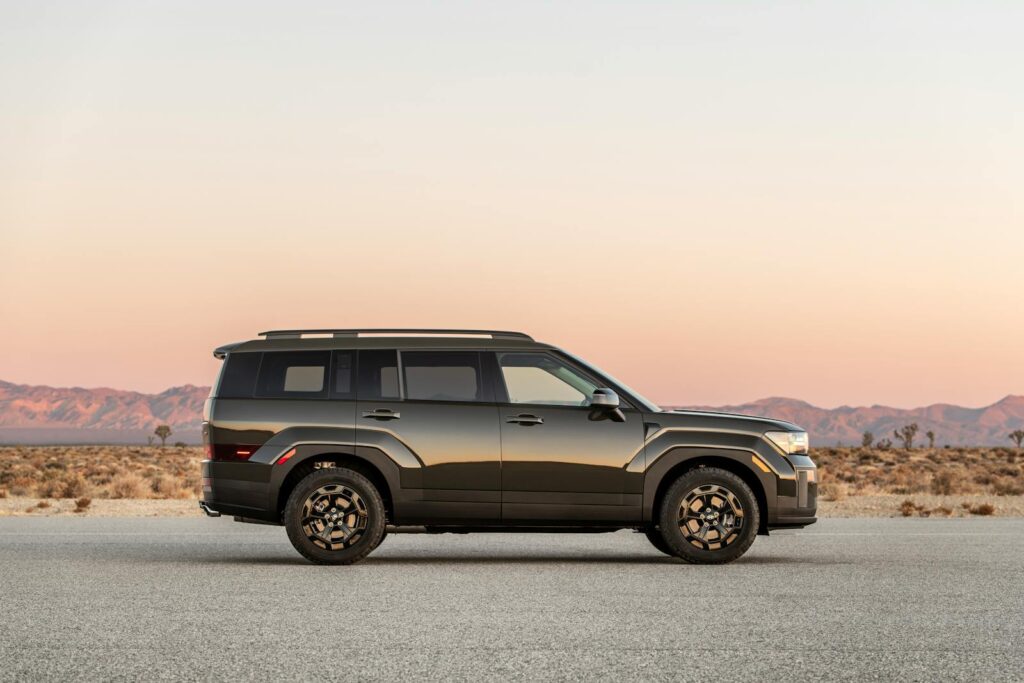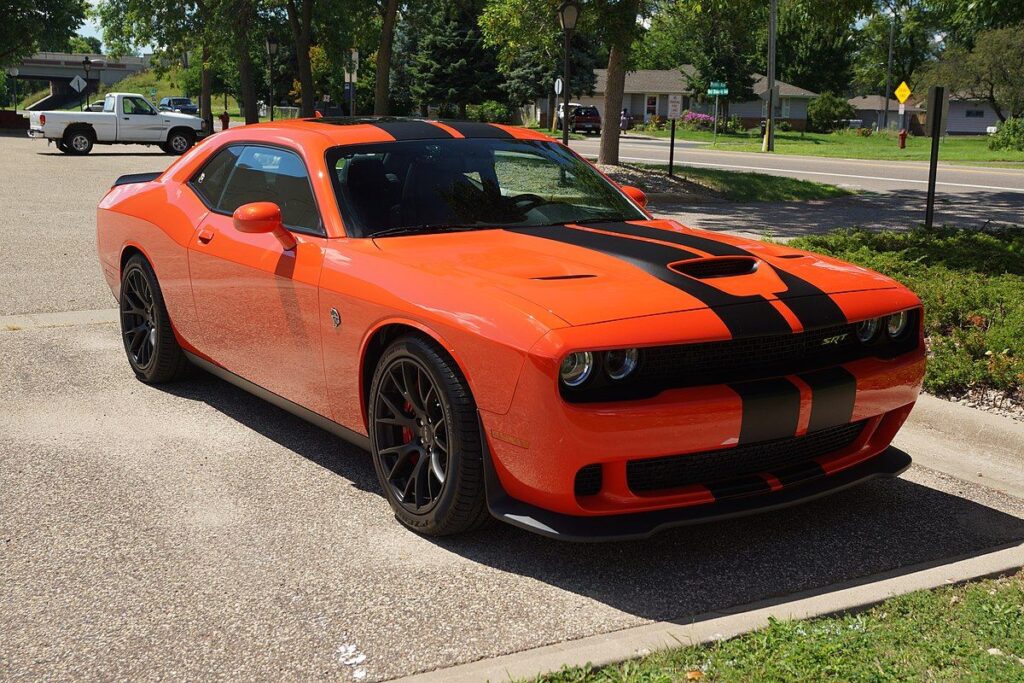
The 1960s. A decade synonymous with revolution, not just in culture and society, but roaringly so on American asphalt. It was an era where automotive giants, often bound by corporate rules, found ingenious ways to inject raw, unadulterated power into everyday vehicles, spawning a new breed of machine: the muscle car. These weren’t just modes of transport; they were statements, embodying a national obsession with speed, aggressive styling, and the thrill of straight-line performance. Fuel economy and turning circles were mere afterthoughts in this pursuit of pavement-melting excitement.
Before the “monsters from 1970” dominated the quarter-mile, the muscle cars of the 1960s were the true pioneers, first to the track and first to challenge the status quo. Unfettered by stringent regulations, these early models were a crucible of creativity, each bringing something profoundly unique to the burgeoning car scene. They weren’t just powerful; they were quirky, in the best possible sense of the word — unafraid to push boundaries, daring to be different, and paving the way for the chrome-laden beasts that would define American performance.
Our journey into this golden age delves deeper than just raw quarter-mile numbers, though we acknowledge their undeniable importance. We’re exploring the cultural tremors each car created, the real-world street performance that could genuinely embarrass any imported “sports car,” and the indelible reputation they forged. We celebrate those muscle cars that stood out, those that defied expectations and etched their names into history by doing things their own way, from one red light to the next.
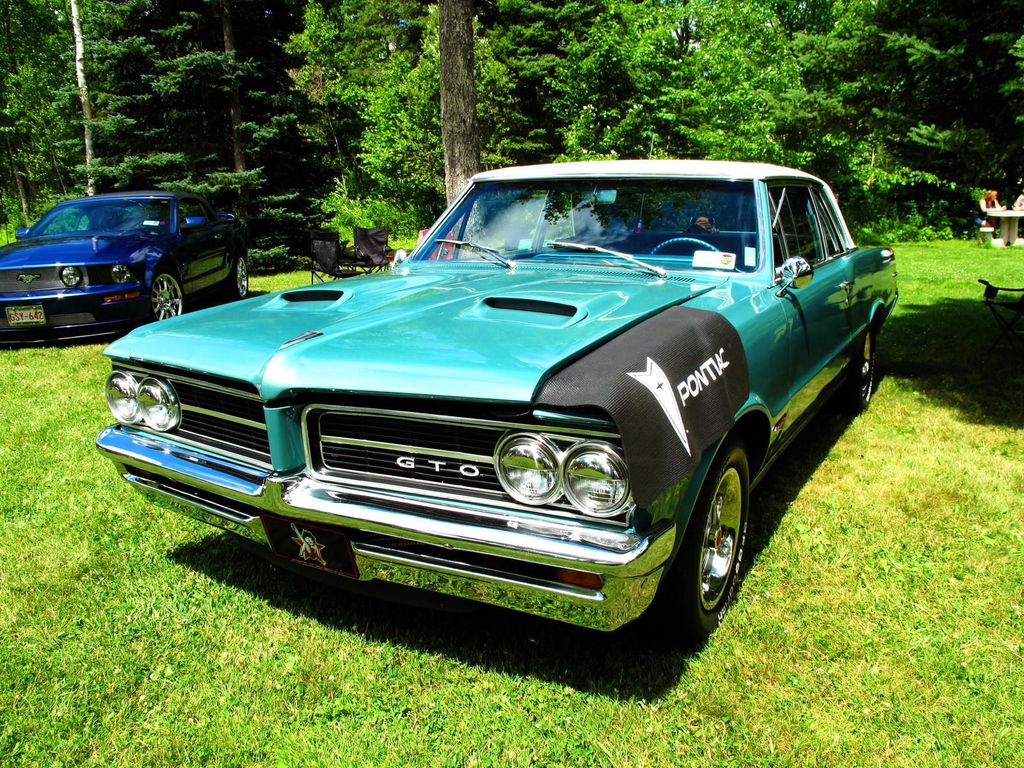
1. **1964 Pontiac GTO**No list of ’60s muscle is complete without a thunderous burnout to the car that truly started it all: the 1964 Pontiac GTO. While powerful vehicles existed prior, it was the GTO that decisively shaped the segment, imbuing it with a distinct identity and a swaggering attitude. It was more than a car; it was a phenomenon, a blueprint, and a declaration of a new era of performance for the masses.
Initially an option package for the mid-size Tempest, the GTO’s offering was revolutionary: a formidable 389 cubic-inch V8, churning out up to 348 horsepower, nestled in a mid-size chassis. This blend of massive power and a relatively compact, affordable price point instantly democratized high-performance motoring for the average hot-rodder, allowing them to experience speed without prohibitive cost. It was an accessible rocket for the working class, capable of 0-60 mph in about 6.6 seconds, a feat for its era.
The GTO was a rebel, famously bending GM’s own internal rules that restricted large displacement engines in mid-size cars. Yet, its rebellious spirit resonated, and it sold like crazy. Its success established the fundamental principles for every muscle car that followed: take a mid-size platform, drop in a huge engine, and make it widely accessible. This “Goat” didn’t just open the door for muscle; it emphatically kicked it off its hinges, solidifying its legend and inspiring a whole generation.
Car Model Information: 1966 Pontiac GTO Coupe
Name: Pontiac GTO
Caption: 2005 Pontiac GTO
Manufacturer: Pontiac (automobile),Holden
Class: Mid-size car,Compact car,Mid-size car
Production: 1963–1974,2003–2006
Predecessor: Pontiac Tempest
Layout: Front-engine, rear-wheel-drive layout
ModelYears: 1964-1974 2004-2006
Categories: 1970s cars, 2000s cars, All articles with unsourced statements, Articles with short description, Articles with unsourced statements from October 2008
Summary: The Pontiac GTO is a front-engine, rear-drive, two-door, and four-passenger automobile manufactured and marketed by the Pontiac division of General Motors over four generations from 1963 until 1974 in the United States — with a fifth generation made by GM’s Australian subsidiary, Holden, for the 2004 through 2006 model years.
The first generation of the GTO is credited with popularizing the muscle car market segment in the 1960s. Some consider the Pontiac GTO to have started the trend with all four domestic automakers offering a variety of competing models.
For the 1964 and 1965 model years, the GTO was an optional package on the intermediate-sized Pontiac LeMans. The 1964 GTO vehicle identification number (VIN) started with 22, while the 1965 GTO VIN began with 237. The GTO was designated as a separate Pontiac model from 1966 through 1971 (VIN 242…). It became an optional package again for the 1972 and 1973 intermediate LeMans. For 1974, the GTO was an optional trim package on the compact-sized Ventura.
The GTO model was revived for the 2004 through 2006 model years as a captive import for Pontiac, a left-hand drive version of the Holden Monaro, itself a coupé variant of the Holden Commodore.
Get more information about: Pontiac GTO
Buying a high-performing used car >>>
Brand: Pontiac Model: GTO
Price: $59,991 Mileage: 4,408 mi.
Read more about: The Unforgettable Classics: 13 Legendary Cars Car Enthusiasts Deeply Regret Letting Go Of, and Their Skyrocketing Values Today

2. **1966 Dodge Coronet HEMI**If the GTO was the cool rebel, the 1966 Dodge Coronet HEMI emerged as the unhinged street brawler, a car that didn’t just push boundaries but smashed them. Dodge exhibited no pretense of subtlety with this creation. Their strategy was direct and devastating: take the capable Coronet’s mid-size body and implant the fearsome 426 HEMI engine, crafting a muscle car that terrified rivals and thrilled passengers alike.
Officially rated at a robust 425 horsepower, the HEMI engine within the Coronet was a fire-breathing monster, unequivocally asserting its dominance on the road. Its hemispherical combustion chambers and giant valves were engineering marvels, ensuring optimum airflow and immense power output that often surpassed its official figures. This raw power was delivered with brutal efficiency, making it clear who was in charge and cementing the HEMI’s legend. The Coronet HEMI could sprint to 60 mph in about 5.3 seconds.
The Coronet HEMI was Dodge’s emphatic declaration: “We’re not here to play nice.” Its understated styling only heightened the shock value of its brutal straight-line performance. This car was more weapon than transportation, calibrated for dominating the drag strip or ruining someone’s day at a stoplight. It epitomized raw, unapologetic performance in its purest form, often described as the muscle car equivalent of a sucker punch – and it landed every time.
Car Model Information: 1967 Dodge Coronet Restomod
Name: Dodge Coronet
Caption: 1967 Dodge Coronet R/T
Manufacturer: Dodge
Production: 1949–1959,1965–1976
Class: Full-size
Predecessor: Dodge Custom
Successor: Dodge Dart
Layout: FR layout
Categories: 1950s cars, 1970s cars, All articles with dead external links, All articles with unsourced statements, Articles with dead external links from June 2016
Summary: The Dodge Coronet is an automobile that was marketed by Dodge in seven generations, and shared nameplates with the same bodyshell with varying levels of equipment installed. Introduced as a full-size car in 1949, it was the division’s highest trim line and moved to the lowest level starting in 1955 through 1959. The name was reintroduced on intermediate-sized models from the 1965 until 1976 model years. Muscle car versions were available starting in 1965 with the 383 and 426 wedge cu in (7.0 L) Chrysler RB engine, followed in 1966 by the powerful 426 cu in (7.0 L) Chrysler Hemi. Other performance models included the “Superbee”, and featured, the 383 cu in (6.3 L) Magnum, among other engine options. The nameplate “coronet” is a type of crown worn by royalty.
In the 1980s, the Coronet was used on Dodge models marketed in Colombia.
Get more information about: Dodge Coronet
Buying a high-performing used car >>>
Brand: Dodge Model: Coronet
Price: $46,500 Mileage: 2,818 mi.
Read more about: 10 Cars That Are so Fun to Drive, You Won’t Miss a Manual Transmission

3. **1965 Buick Gran Sport**In a landscape often dominated by boisterous machines, the 1965 Buick Gran Sport offered a different, more sophisticated take on muscle. If other muscle cars were bar brawlers, the Gran Sport was the refined assassin, always impeccably dressed. It brought serious, undeniable muscle to Buick’s established reputation for comfort and understated luxury, proving that performance didn’t have to be uncivilized.
Built upon the capable Skylark platform, the Gran Sport cunningly hid its potent intentions beneath a gentlemanly exterior. The heart of this sophisticated bruiser was a 401 cubic-inch “Nailhead” V8 engine, robustly producing a healthy 325 horsepower. Buick shrewdly marketed this as a “400” to deftly navigate GM’s internal restrictions on engine displacement for its mid-size models, a clever move to unleash considerable power.
The result was a remarkably smooth, yet immensely powerful, machine. The Gran Sport possessed the unique ability to run with the wildest kids, capable of impressive sprints, all while maintaining its polished cufflinks. It wasn’t the flashiest or the loudest, but it consistently delivered enormous torque and surprising bursts of speed, always with a subtle wink and a knowing nod. It was the undisputed sleeper of the muscle car world, a vehicle that could easily be underestimated, a refined assassin in a world of bar brawlers.
Car Model Information: 2018 Mercedes-Benz E-Class E 300
Name: Gran Sport
Logo: Buick gs emblem.png
Producttype: Performance car
Currentowner: General Motors
Producedby: General Motors
Introduced: [object Object]
Related: T-Type
Markets: U.S.
Categories: All Wikipedia articles in need of updating, All articles with unsourced statements, Articles with short description, Articles with unsourced statements from September 2020, Articles with unsourced statements from September 2025
Summary: The Gran Sport name has been used on several high-performance cars built by General Motors for its Buick brand since 1965. In the GM brands hierarchy, Buick was surpassed in luxury and comfort appointments only by Cadillac, which did not produce performance models. As a result, the Buick GS series were the most opulently equipped GM sport models of their era.
The Gran Sport performance enhancements on all Buick products during this era sought to affirm Buick’s tradition of producing powerful and comfortable products going back to the 1930s when all Buicks of the time were upgraded to the Buick Fireball Straight Eight, then installed the 278 cu in (4.6 L) Roadmaster engine in the shortest model Special and introduced the Century, known as “the banker’s hot rod” with a three speed synchromesh manual transmission. The Gran Sport sought to identify cars that were fun to drive with a luxury approach.
Get more information about: Buick Gran Sport
Buying a high-performing used car >>>
Brand: Buick Model: Gran Sport
Price: $19,544 Mileage: 57,939 mi.
Read more about: Unvarnished Truth: 14 ‘Classic’ American Cars That Delivered Awful Driving Experiences
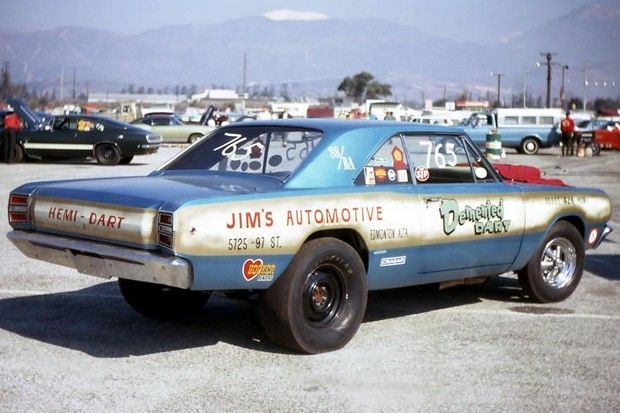
4. **1968 Dodge Hemi Dart**Few vehicles possessed the raw, uncompromising, and almost brutal personality of the 1968 Dodge Hemi Dart. This was not merely a car; it was a single-minded weapon, engineered with such an exclusive focus on drag racing that it made even other muscle cars appear luxurious. Stripped down to its bare essentials, every ounce of excess purged for speed, the Hemi Dart was a masterclass in specialized performance.
This wasn’t a vehicle for comfort. It famously came with no radio, no sound deadening, lightweight glass, and frequently featured fiberglass fenders and a hood so aggressively styled it appeared to have swallowed a small refrigerator. Its design spoke volumes about its singular purpose: annihilating the quarter-mile. Dodge made no effort to conceal its intentions; this was a factory-built drag racer, poorly disguised as a street car.
Powering this contraption was a race-spec 426 HEMI V8, officially rated at 425 horsepower, though universally acknowledged to easily push well over 500 horsepower. Its massive, unmistakable hood scoops were functional intakes. The quirkiness stemmed from its unlikely host: a compact Dart, typically associated with sensible commuting, now crammed with an obscenely powerful HEMI. Its thin front fenders and battery relocated to the trunk for optimal weight distribution underscored its single-minded focus. On the drag strip, it was almost unstoppable, capable of mid-10-second quarter-mile times.
Car Model Information: 2018 Mercedes-Benz E-Class E 300
Name: Dodge Dart
Caption: 1966 Dodge Dart GT 2-door hardtop
Manufacturer: Dodge
Production: 1959–1976 (US market)
1969-1981 (Brazil)
AlternativeName: Charger (Brazil)
ModelYears: 1960–1976 (US market)
1970-1981 (Brazil)
Class: Full-size
Layout: FR layout
Predecessor: Dodge Coronet#Fourth generation (1957–1959)
Related: Plymouth Valiant,Chrysler Valiant,Dodge Phoenix
Successor: Dodge Aspen,Dodge Diplomat,Talbot Tagora
Categories: 1970s cars, All articles with unsourced statements, Articles with short description, Articles with unsourced statements from December 2023, Articles with unsourced statements from May 2025
Summary: The Dodge Dart is a line of passenger cars produced by Dodge from the 1959 to 1976 model years in North America, with production extended to later years in various other markets.
The production Dodge Dart was introduced as a lower-priced full-size model in 1960 and 1961, but became a mid-size car for one model year for 1962, and was then reduced to a compact for two generations, from 1963 to 1976.
Chrysler had first used ‘Dart’ name plates on two Italian styled show cars, in 1956 and 1957, before it became a Dodge model name. The Dart nameplate was resurrected for a Fiat-derived compact car that was introduced in 2012.
Get more information about: Dodge Dart
Buying a high-performing used car >>>
Brand: Dodge Model: Hemi Dart
Price: $19,544 Mileage: 57,939 mi.
Read more about: 12 Classic Boomer Cars Millennials Avoid: The Hidden Factors Behind Younger Generations’ Disinterest

5. **1968 Oldsmobile Toronado**The 1968 Oldsmobile Toronado stands out as arguably the weirdest, most unconventional muscle-adjacent car to emerge from the decade. Its distinctiveness wasn’t merely cosmetic; it was a massive, front-wheel-drive luxury coupe that looked as though it had driven straight out of a 1960s spy movie, challenging every preconceived notion of what a performance car should be. In a world of rear-wheel-drive orthodoxy, the Toronado dared to be different.
Beneath its futuristic, long, low, and mean styling, which featured innovative hidden headlights and muscle car proportions, resided a serious powerhouse. The Toronado was equipped with a formidable 455 cubic-inch V8 engine, pumping out a robust 375 horsepower and an earth-shattering 510 lb-ft of torque. This immense power was enough to peel pavement, an astonishing feat given that all of it was channeled exclusively through the front wheels.
The fundamental quirk, and its most radical departure, was that front-wheel-drive layout. At a time when virtually every other tire-shredding muscle car adhered to rear-drive tradition, the Toronado boldly declared itself done with convention, setting out to reinvent the game. While not a drag strip hero, it could roast its front tires into oblivion and cruise at high speeds with eerie, composed stability. The Toronado was a wild, audacious bet, a fusion of muscle performance with science fiction design, proving that unconventional engineering could yield compelling results.
Car Model Information: 1973 Oldsmobile Toronado Brougham
Name: Oldsmobile Toronado
Caption: 1966 Toronado
Manufacturer: Oldsmobile
Production: 1965–1992
ModelYears: 1966–1992
Class: Full-size,personal luxury car
BodyStyle: coupe
Platform: GM E platform
Layout: FF layout
Related: Cadillac Eldorado,Buick Riviera
Categories: 1960s cars, 1970s cars, 1980s cars, 1990s cars, All Wikipedia articles written in American English
Summary: The Oldsmobile Toronado is a personal luxury car manufactured and marketed by the Oldsmobile division of General Motors from 1966 to 1992 over four generations. The Toronado was noted for its transaxle version of GM’s Turbo-Hydramatic transmission, making it the first U.S.-produced front-wheel drive automobile since the demise of the Cord 810/812 in 1937.
The Toronado used the GM E platform introduced by the rear-wheel drive Buick Riviera in 1963 and adopted for the front-wheel drive 1967 Cadillac Eldorado. The three models shared the E platform for most of the Toronado’s 26-year history.
Get more information about: Oldsmobile Toronado
Buying a high-performing used car >>>
Brand: Oldsmobile Model: Toronado
Price: $10,995 Mileage: 47,954 mi.
Read more about: Unvarnished Truth: 14 ‘Classic’ American Cars That Delivered Awful Driving Experiences
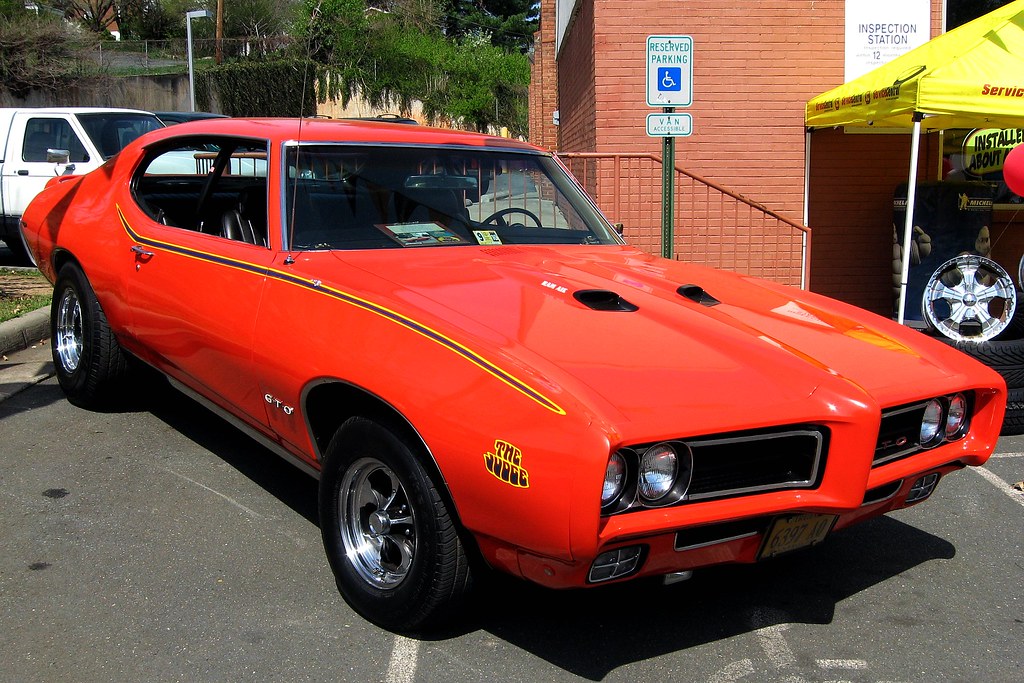
6. **1969 Pontiac GTO The Judge**Pontiac’s GTO had already cemented its legacy, but in 1969, it reached new heights of bold, flamboyant, and undeniably fun expression with “The Judge.” This iteration wasn’t just fast; it was a character, bursting with personality and an audacious attitude. Its primary quirk, a stroke of marketing genius, was the name itself, lifted directly from the popular Rowan & Martin’s Laugh-In TV show’s catchphrase: “Here come da’ Judge!” It was an unusual, pop-culture-infused move that resonated brilliantly.
Visually, The Judge was designed to grab attention with theatrical flair. It sported eye-searing “Carousel Red” paint – essentially orange – complemented by a flashy rear spoiler, unique multi-colored stripes, and an aggressive Ram Air IV hood scoop. This car was not merely built to win races; it was built to look absolutely unforgettable while doing so. It embodied a less serious, more joyful approach to muscle, proving a serious performer could also be a party on wheels.
Underneath its vibrant exterior lay the beating heart of a true performer, powered by either the potent Ram Air III 400 cubic-inch V8 (366 hp) or the even more formidable Ram Air IV (370 hp) variant. These engines allowed The Judge to devour the quarter-mile in the low 14-second range, a testament to its serious performance capabilities. In an era teeming with competitors, the 1969 Pontiac GTO Judge stood out as a genuine original, a vibrant peacock strutting confidently, masterfully blending brute force with charisma.
Car Model Information: 1966 Pontiac GTO Coupe
Name: Pontiac GTO
Caption: 2005 Pontiac GTO
Manufacturer: Pontiac (automobile),Holden
Class: Mid-size car,Compact car,Mid-size car
Production: 1963–1974,2003–2006
Predecessor: Pontiac Tempest
Layout: Front-engine, rear-wheel-drive layout
ModelYears: 1964-1974 2004-2006
Categories: 1970s cars, 2000s cars, All articles with unsourced statements, Articles with short description, Articles with unsourced statements from October 2008
Summary: The Pontiac GTO is a front-engine, rear-drive, two-door, and four-passenger automobile manufactured and marketed by the Pontiac division of General Motors over four generations from 1963 until 1974 in the United States — with a fifth generation made by GM’s Australian subsidiary, Holden, for the 2004 through 2006 model years.
The first generation of the GTO is credited with popularizing the muscle car market segment in the 1960s. Some consider the Pontiac GTO to have started the trend with all four domestic automakers offering a variety of competing models.
For the 1964 and 1965 model years, the GTO was an optional package on the intermediate-sized Pontiac LeMans. The 1964 GTO vehicle identification number (VIN) started with 22, while the 1965 GTO VIN began with 237. The GTO was designated as a separate Pontiac model from 1966 through 1971 (VIN 242…). It became an optional package again for the 1972 and 1973 intermediate LeMans. For 1974, the GTO was an optional trim package on the compact-sized Ventura.
The GTO model was revived for the 2004 through 2006 model years as a captive import for Pontiac, a left-hand drive version of the Holden Monaro, itself a coupé variant of the Holden Commodore.
Get more information about: Pontiac GTO
Buying a high-performing used car >>>
Brand: Pontiac Model: GTO
Price: $59,991 Mileage: 4,408 mi.
Read more about: Kevin Hart’s Garage: A Deep Dive into His Custom-Built American Classics, Supercars, and Roaring Resto-Mods
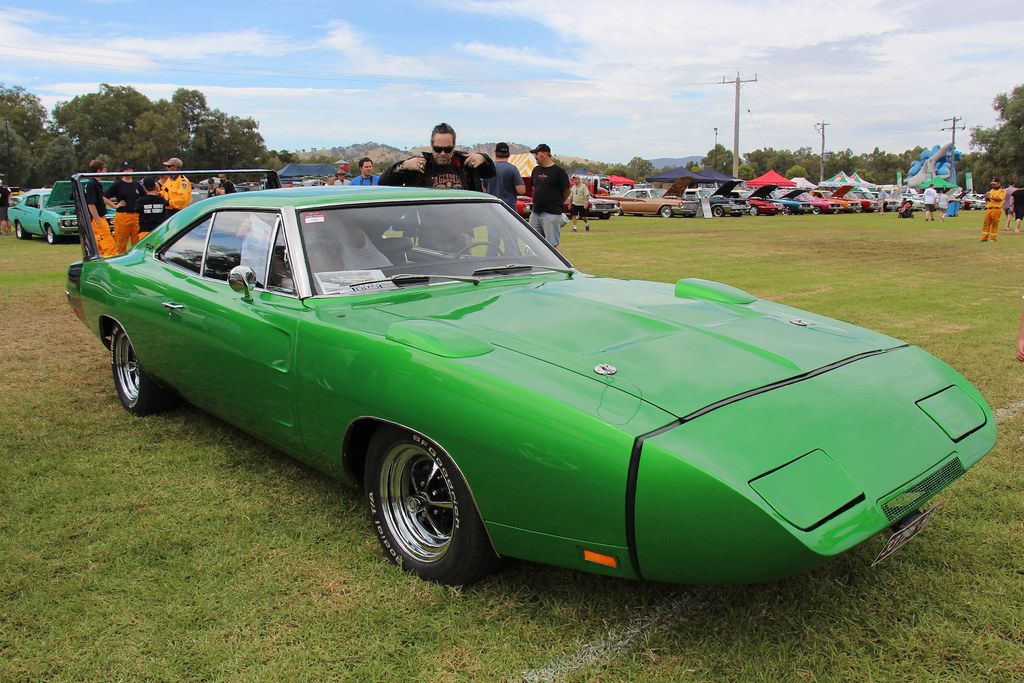
7. **1969 Dodge Charger Daytona**The 1969 Dodge Charger Daytona was, without a doubt, not built with subtlety in mind. This car was born from a singular, extreme purpose: to achieve unprecedented speed on NASCAR’s superspeedways. While it certainly looked cool, it did so with an almost alien, bizarre aesthetic that guaranteed dropped jaws and confused stares. Its primary quirk was its utterly outrageous and unapologetic aerodynamic package.
This aerodynamic marvel included a massive, visually arresting 23-inch-tall rear wing, bolted directly to the rear quarter panels, and a sharply pointed nose cone that extended the car’s length by an additional 18 inches. These weren’t subtle design flourishes; they were explicit, functional components of a NASCAR prototype barely disguised for street legality. The Daytona was a “winged warrior,” a testament to the desperate need to beat Ford on the track.
Born from fierce track competition, only 503 units were produced for NASCAR homologation, making it incredibly rare. Beneath that extraordinary aerodynamic shell, buyers had a choice of powerplants: the robust 440 Magnum V8 (375 hp) or the legendary 426 HEMI (425 hp). On superspeedways, the Daytona was a revelation, capable of speeds exceeding an astonishing 200 mph – a historic achievement. Its capabilities extended to the drag strip, blasting through the quarter-mile in the low-to-mid 13-second range. This combination of brutal performance and outrageous styling rendered it unforgettable, a true icon.
Car Model Information: 2018 Mercedes-Benz E-Class E 300
Name: Dodge Charger Daytona
Caption: 1969 Dodge Charger Daytona
Manufacturer: Dodge
Production: 1969–1970,2006–2009,2013,2017–2023
Class: Muscle car
Layout: FR layout
Categories: 1960s cars, 1970s cars, 2000s cars, All articles needing additional references, All articles with unsourced statements
Summary: Dodge produced three separate models with the name Dodge Charger Daytona, all of which were modified Dodge Chargers. The name was taken from Daytona Beach, Florida, which was an early center for auto racing and still hosts the Daytona 500, NASCAR’s premier event. The original Dodge Charger Daytona was designed to beat the competition in NASCAR racing. It was the first NASCAR vehicle to reach 200 miles per hour, which was a major milestone at the time.
The first use of the ‘Daytona’ name for a car was on a version of the Studebaker Lark. The Daytona was the performance model of the compact Lark, and it was produced during the 1960s.
Get more information about: Dodge Charger Daytona
Buying a high-performing used car >>>
Brand: Dodge Model: Charger Daytona
Price: $19,544 Mileage: 57,939 mi.
Read more about: 10 Cars That Are so Fun to Drive, You Won’t Miss a Manual Transmission
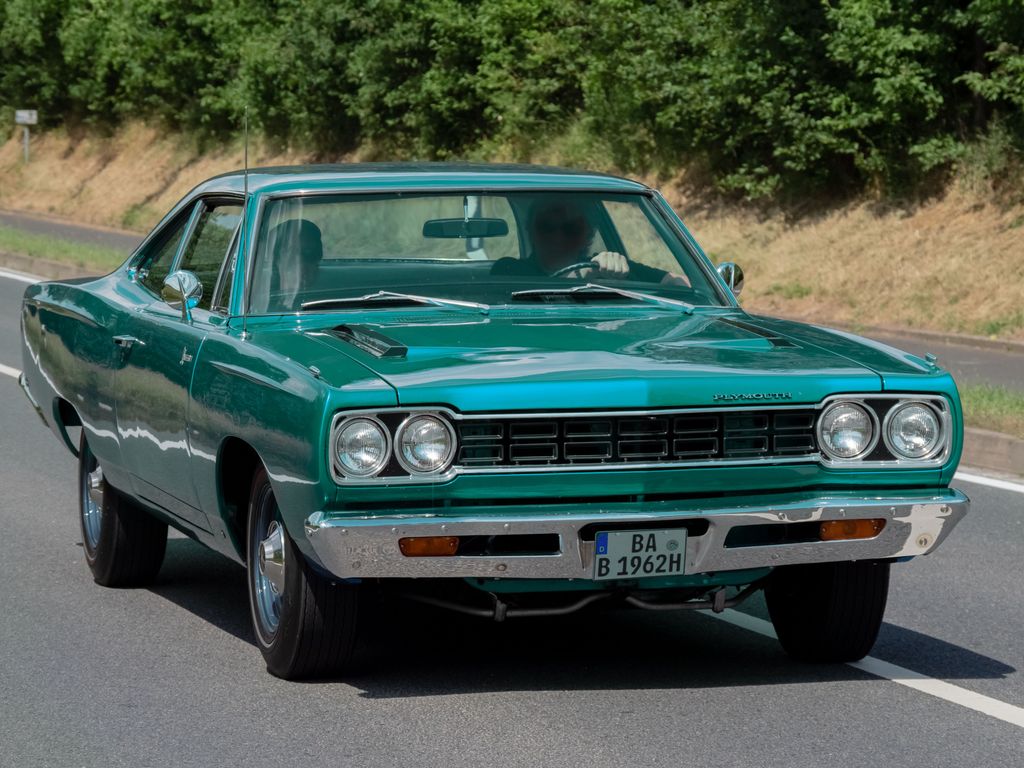
8. **1969 Plymouth Road Runner**The 1969 Plymouth Road Runner was a brilliant stroke of marketing and engineering, conceived to deliver raw muscle car thrills without the prohibitive price tag. Its distinctiveness wasn’t just in its performance; it famously boasted a horn that mimicked the iconic ‘beep-beep’ sound of the Looney Tunes character, a playful quirk that immediately endeared it to a generation of young, speed-hungry drivers. This model embodied a refreshingly straightforward philosophy, stripping away unnecessary luxuries to focus purely on what mattered: an exhilarating driving experience.
Plymouth’s goal was clear: to offer robust performance that was within reach of budget-conscious consumers, directly appealing to drivers who prioritized unadulterated speed over extravagant features. This dedication to affordability and power was evident in its minimalist interior, functional steel wheels, and a no-frills design that stood in stark contrast to the increasingly ornate competition. It was a muscle car for the masses, a testament to the idea that you didn’t need to break the bank to own a formidable machine capable of impressive feats on the street.
Under its unpretentious exterior, the Road Runner packed serious firepower. Engine options included the formidable 383 cubic-inch V8, churning out a healthy 335 horsepower, or for those craving even more grunt, the legendary 426 HEMI, rated at 425 horsepower. A HEMI-equipped Road Runner was a force to be reckoned with, capable of tearing through the quarter-mile in the low 13-second range. This consistent performance, combined with its dependable handling, quickly solidified its reputation as a favorite for enthusiasts who valued straightforward, potent power delivery.
The Road Runner’s practical, no-nonsense approach and its distinctive cartoon connection helped cement its place as one of the most influential and brutally honest muscle cars of its era. It proved that a car could be incredibly fast and fun without requiring fancy chrome or a plush interior. It remains a beloved symbol of muscle car accessibility, embodying speed and a genuinely playful attitude, a refreshing departure in a segment often dominated by more serious contenders.
Car Model Information: 2018 Mercedes-Benz E-Class E 300
Name: Plymouth Road Runner
Assembly: Detroit,Michigan
Manufacturer: Plymouth (automobile)
Class: Mid-size car
Production: 1968–1980
Related: unbulleted list
Layout: FR layout
Categories: 1970s cars, 1980s cars, All articles needing additional references, All articles with peacock terms, All articles with unsourced statements
Summary: The Plymouth Road Runner is a muscle car introduced by Chrysler in the United States for the 1968 model year and marketed under its Plymouth brand. Initially based on the Belvedere, the brand’s basic mid-size model, the Road Runner combined a powerful engine with a spartan trim level and a price that undercut increasingly upscale and expensive muscle cars such as the Pontiac GTO and Plymouth’s own GTX. It was initially a sales success.
The Road Runner was built in three generations on the mid-size B platform. Like most muscle cars, its performance and sales declined in the 1970s due to an increasing focus on fuel economy and the adoption of more stringent U.S. emission standards. The nameplate became to a trim package for the compact Plymouth Volaré for model year 1976—no longer offering any special performance capability—and was discontinued in 1980.
Get more information about: Plymouth Road Runner
Buying a high-performing used car >>>
Brand: Plymouth Model: Road Runner
Price: $19,544 Mileage: 57,939 mi.
Read more about: Unvarnished Truth: 14 ‘Classic’ American Cars That Delivered Awful Driving Experiences
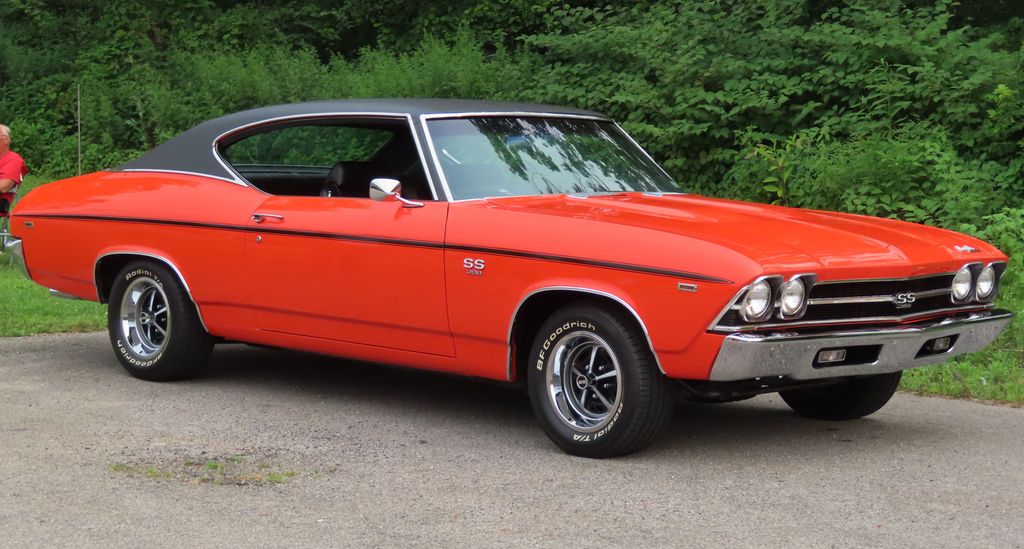
9. **1969 Chevrolet Chevelle SS 396**The 1969 Chevrolet Chevelle SS 396 stands as one of the most recognized and ubiquitous muscle cars of its time, masterfully blending undeniable style with surprising practicality. Chevrolet astutely positioned this model to deliver strong performance in a package that commanded attention, making it the quintessential cool older brother of the Camaro, capable of handling daily errands while still dominating the strip. Its bold exterior, often featuring a twin-domed hood that could incorporate functional cowl induction, gave it an assertive presence that made it a standout in a fiercely competitive segment.
One of its most intriguing quirks was the nomenclature itself; while branded as the “396,” this designation often disguised a fascinating array of engine displacements. Various versions of the Chevelle SS 396 actually came with legitimate 396 cubic-inch V8s, producing outputs from 325 to 375 horsepower. However, in a cunning move, some late-year 1969 models quietly packed a larger 402 cubic-inch V8, which was still marketed as a “396” for the sake of continuity and brand recognition, adding a layer of mystique for enthusiasts.
Performance was, of course, its primary allure. The Chevelle SS 396 offered robust, quick acceleration and consistent reliability, making it a highly popular choice among drivers who desired a car capable of both daily commuting and strong results on the drag strip. It was a versatile performer that could reliably achieve mid-14-second quarter-mile times, demonstrating a balance of streetability and raw power that few others could match, solidifying its reputation as a versatile and potent contender in the muscle car wars.
This model remains a classic example of late-1960s muscle car design and engineering, perfectly encapsulating the era’s ethos: a big engine, a simple yet effective car, and an endless promise of fun. The 1969 Chevelle SS 396 just screams ‘America’ loud and proud, representing the heart of a generation that craved both power and a statement-making presence on the road. It’s a timeless icon that perfectly illustrates the balance between everyday usability and exhilarating performance.
Car Model Information: 2018 Mercedes-Benz E-Class E 300
Name: Chevrolet Chevelle
Caption: 1970 Chevrolet Chevelle SS 396 Sport Coupe
Manufacturer: Chevrolet
Production: 1963–1977
ModelYears: 1964–1977
Class: Mid-size
Platform: GM A platform (RWD)
Layout: FR layout
Successor: Chevrolet Malibu
Categories: 1970s cars, All articles needing additional references, All articles that may contain original research, All articles with specifically marked weasel-worded phrases, All articles with unsourced statements
Summary: The Chevrolet Chevelle is a mid-sized automobile that was produced by the Chevrolet division of General Motors (GM) in three generations for the 1964 to 1977 model years. Part of the GM A-body platform, the Chevelle was one of Chevrolet’s most successful nameplates. Body styles included coupes, sedans, convertibles, and station wagons. The “Super Sport” versions were produced through the 1973 model year and Lagunas from 1973 through to 1976.
After a four-year absence, the El Camino was reintroduced as part of the new Chevelle lineup in 1964.
From 1964 to 1969, GM of Canada sold a modified version of the Chevelle that included a Pontiac-style grille, and a LeMans instrument panel, marketed as the Beaumont.
The Malibu was the top-of-the-line model to 1972, and completely replaced the Chevelle nameplate starting with the redesigned, and downsized 1978 model year.
Get more information about: Chevrolet Chevelle
Buying a high-performing used car >>>
Brand: Chevrolet Model: Chevelle SS 396
Price: $19,544 Mileage: 57,939 mi.
Read more about: Lady Gaga’s Garage Secrets: Unpacking the Pop Icon’s Eclectic Car Collection, from Vintage American Muscle to Cutting-Edge Supercars

10. **1966 Oldsmobile 442**The 1966 Oldsmobile 442 brought a unique blend of muscle and maturity to the performance car landscape, standing out as a sophisticated bruiser among its more boisterous contemporaries. Where other muscle cars often shrieked about raw power, the 442 offered a more balanced, almost gentlemanly approach to high-performance motoring. It cultivated an image akin to a well-dressed individual who secretly possessed incredible strength, earning its respected place among the decade’s best.
Its most notable quirk was the designation “442” itself, a numerical code that originally and explicitly spelled out its performance intentions: a 4-barrel carburetor, a 4-speed manual transmission, and dual exhaust. For the 1966 model year, the 442 received a mighty 400 cubic-inch V8 engine, which cranked out a potent 350 horsepower, with an even more formidable 360 horsepower available through the potent W30 option. This clear articulation of its performance credentials showcased a methodical approach to muscle car engineering.
The Oldsmobile 442 delivered quick acceleration combined with surprisingly refined handling for a vehicle of its stature, appealing to drivers who sought more than just blistering straight-line speed. This was a car that could genuinely be driven every day without sacrificing comfort, garnering a loyal following among enthusiasts who appreciated precision and control as much as sheer raw power. It represented a thoughtful evolution in muscle car design, offering serious performance without resorting to juvenile theatrics.
The true genius of the 442 lay in its remarkable balance. It offered substantial power and dynamic capability, yet it did so with an understated elegance and an air of confidence that set it apart. It was, and remains, the quintessential muscle car for the gentleman who occasionally enjoys lighting up the tires, but prefers to do so with a touch of class and sophistication. The 442 demonstrated that muscle could indeed be refined.
Car Model Information: 1969 Oldsmobile 442
Name: Oldsmobile 442
Manufacturer: Oldsmobile
ModelYears: 1964–1980,1985–1987,1990–1991
Class: Muscle car
Layout: FR layout
Caption: 1971 Oldsmobile 442
Categories: 1960s cars, 1970s cars, 1980s cars, All articles with unsourced statements, Articles with short description
Summary: The Oldsmobile 4-4-2 is a muscle car produced by Oldsmobile between the 1964 and 1987 model years. Introduced as an option package for US-sold F-85 and Cutlass models, it became a model in its own right from 1968 to 1971, spawned the Hurst/Olds in 1968, then reverted to an option through the mid-1970s. The name was revived in the 1980s on the rear-wheel drive Cutlass Supreme and early 1990s as an option package for the new front-wheel drive Cutlass Calais.
The “4-4-2” name (pronounced “Four-four-two”) derives from the original car’s four-barrel carburetor, four-speed manual transmission, and dual exhausts. It was originally written “4-4-2” (with badging showing hyphens between the numerals), and remained hyphenated throughout Oldsmobile’s use of the designation. Beginning in 1965, the 4-4-2s standard transmission was a three-speed manual along with an optional two-speed automatic and four-speed manual, but were still badged as “4-4-2″s.
Because of this change, from 1965 on, according to Oldsmobile brochures and advertisements, the 4-4-2 designation referred to the 400 cubic inch engine, four-barrel carburetor, and dual exhausts. By 1968, badging was shortened to simply “442”, but Oldsmobile brochures and internal documents continued to use the “4-4-2” model designation.
Get more information about: Oldsmobile 442
Buying a high-performing used car >>>
Brand: Oldsmobile Model: 442
Price: $43,990 Mileage: 24,000 mi.
Read more about: From Dad’s Pride to Your Disdain: Why Millennials Are Ditching These 15 Classic Boomer Cars
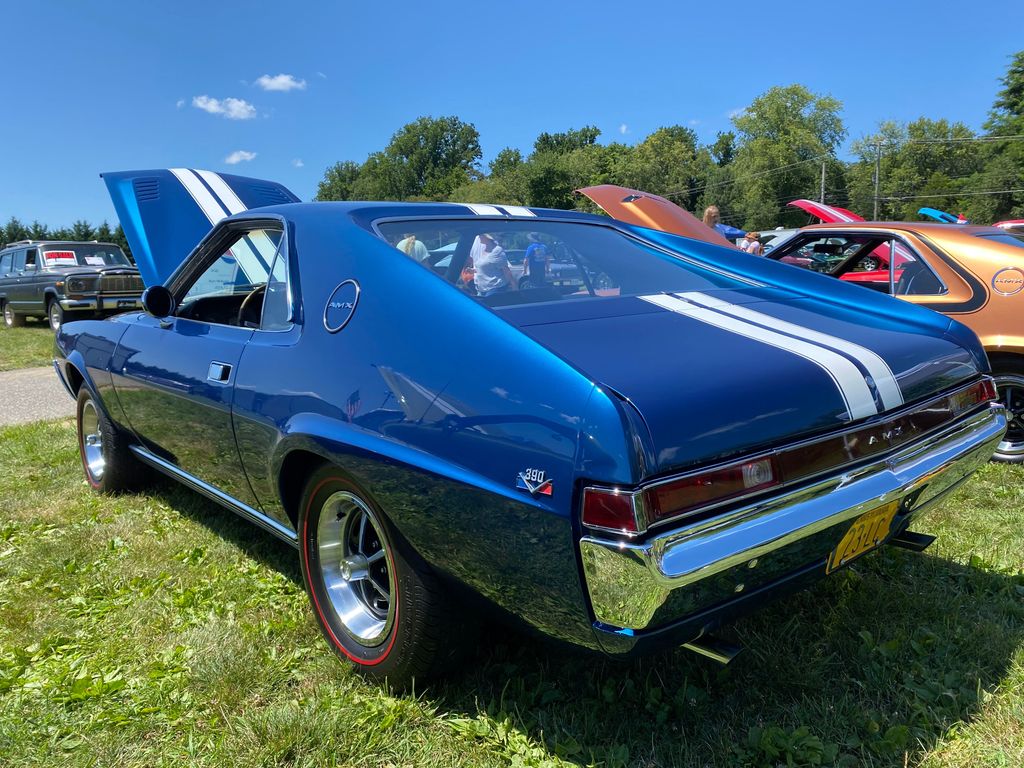
11. **AMC AMX**Constructed between 1968 and 1970, the AMC AMX was an undeniable oddball participant in the burgeoning muscle-car melee, boldly carving out its own unique niche. Diverging from most of its competitors, it was conceived as a two-place performance coupe, a distinct design choice that immediately set it apart in a market flooded with four-seater muscle cars. This unique positioning allowed American Motors to focus on a pure, uncompromised driving experience that emphasized agility and a more intimate connection between driver and machine.
Beneath its distinctive styling, the AMX packed a serious punch, powered by a robust 390 cubic-inch V8 engine that delivered a healthy 315 horsepower. What truly enhanced its appeal, beyond its raw power, was its remarkably short wheelbase, even more compact than many pony cars of the era. This design choice contributed to its excellent handling characteristics, offering a level of agility that was often overlooked in muscle cars, while still providing robust and satisfying straight-line acceleration that could hold its own against more conventional rivals.
The AMX’s combination of affordability and unmistakably distinctive styling helped American Motors stand out from the behemoth Detroit auto makers, who often dominated the market with more conventional offerings. It was a testament to AMC’s willingness to take risks and innovate, appealing to a segment of buyers looking for something different, something with personality that reflected their own individuality, rather than just raw horsepower figures.
Though its production volumes were not as high as its mainstream competitors, the AMC AMX powerfully demonstrated that compelling performance and attractive styling could successfully converge in a market niche vehicle. It was a bold declaration from a smaller manufacturer, proving that unconventional engineering and a clear vision could yield a memorable and highly capable muscle car, leaving an enduring legacy as a true original.
Read more about: Unveiling the Ghosts of Automotive Futures: The Secret Histories of 10 Revolutionary Cars That Never Were
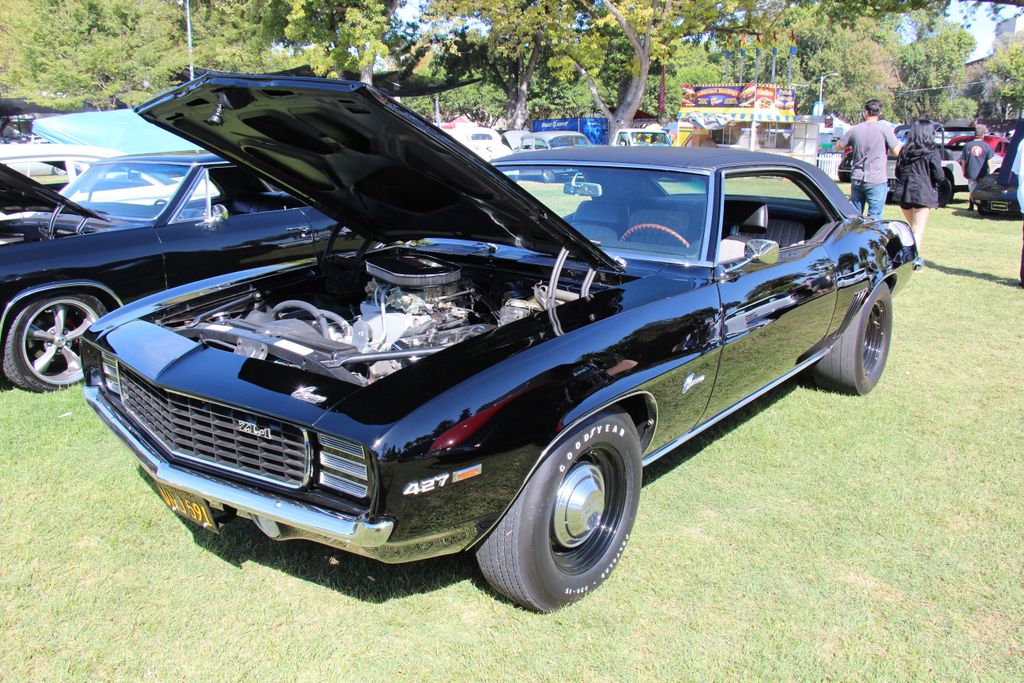
12. **1969 Chevrolet COPO Camaro**The 1969 Chevrolet COPO Camaro emerged as a legendary product of GM’s Central Office Production Order (COPO) system, a discreet program that allowed certain savvy dealerships to circumvent the corporation’s official engine limitations. This was not a car destined for the average showroom; it was a carefully orchestrated rebellion, designed to put uncompromising power into the hands of racers. The COPO 9561 option specifically endowed the Camaro chassis with a mighty 427 cubic-inch L72 V8 engine, officially rated at a potent 425 horsepower.
Even more elusive and almost mythical was the COPO 9560, which featured an all-aluminum ZL1 version of the 427 engine. This ZL1 variant was a marvel of engineering, not only weighing around 500 pounds less than its iron counterpart but also boasting an output of approximately 430 horsepower. Originally developed with a clear focus on Can-Am racing, its lightweight construction and immense power made it a formidable contender, showcasing Chevrolet’s ability to push the boundaries of factory performance when corporate restrictions were artfully bypassed.
These cars were unequivocally built exclusively for drag racing, stripped of anything that didn’t contribute to quarter-mile dominance. They featured heavy-duty cooling systems, significantly beefed-up drivetrain components to withstand brutal launches, and very limited luxury options. With these enhancements, the COPO Camaro was capable of tearing through the quarter-mile in the low 13-second range, a time that could drop even further with expert tuning, making it a true terror on the strip.
The 1969 COPO Camaro became the stuff of factory-high-performance legends, a whispered secret among those who truly knew automotive power. It embodied a singular, uncompromising focus on raw performance, demonstrating what was possible when engineering prowess was unleashed, even if it meant bending a few rules. These rare beasts remain highly coveted, revered as symbols of an era where ultimate power was paramount.
Car Model Information: 2018 Chevrolet Camaro 1LS
Name: Chevrolet Camaro
Manufacturer: Chevrolet
Production: 1966–2002,2009–2023
ModelYears: 1967–2002,2010–2024
Class: Pony car
BodyStyle: coupe,convertible
Platform: GM F platform,GM Zeta platform,GM Alpha platform
Layout: Front-engine, rear-wheel-drive layout
Categories: 1970s cars, 1980s cars, 1990s cars, 2+2 coupés, 2000s cars
Summary: The Chevrolet Camaro is a mid-size American automobile manufactured by Chevrolet, classified as a pony car. It first went on sale on September 29, 1966, for the 1967 model year and was designed to compete with the Ford Mustang. The Camaro shared its platform and major components with the Firebird, produced by General Motors’ Pontiac division that was also introduced for the 1967 model year.
Four distinct generations of the Camaro were developed before production ended in 2002. The nameplate was revived on a concept car that evolved into the fifth-generation Camaro; production started on March 16, 2009.
Production of the sixth generation of the Camaro ended in December 2023, for the 2024 model year.
Get more information about: Chevrolet Camaro
Buying a high-performing used car >>>
Brand: Chevrolet Model: Camaro
Price: $19,125 Mileage: 69,196 mi.
Read more about: Unearthing the Automotive Unicorns: 9 Muscle Cars So Rare Even Dedicated Collectors Scramble to Find Them
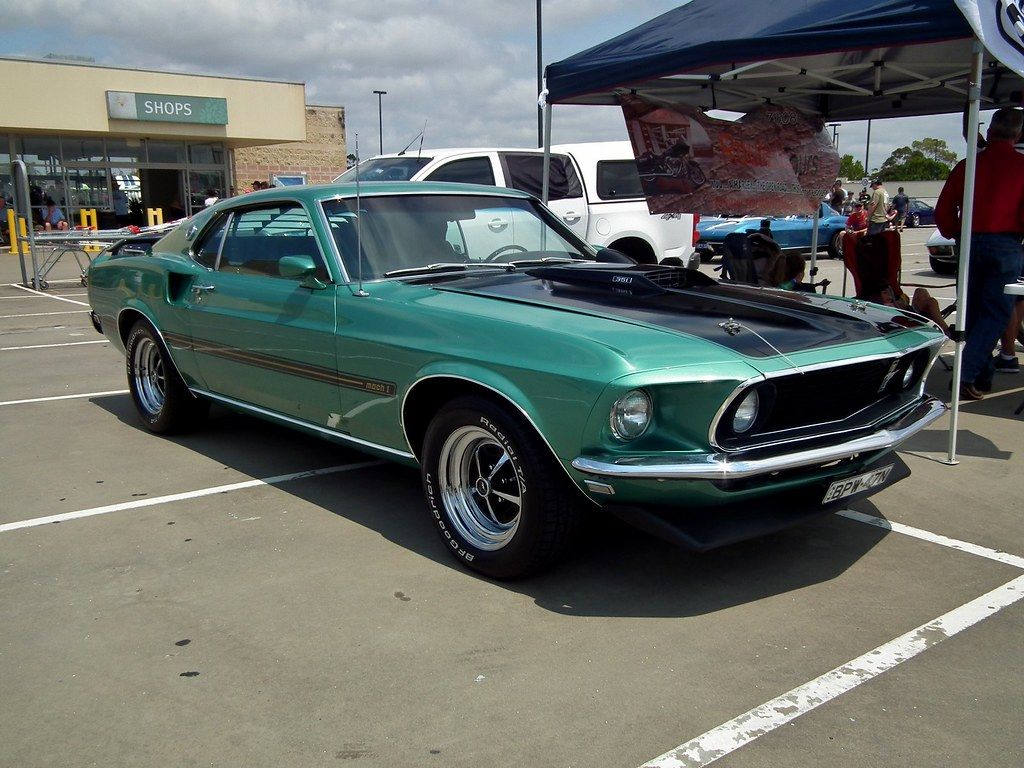
13. **1969 Ford Boss 429 Mustang**The 1969 Ford Boss 429 Mustang was a monumental achievement, born not for the street, but as a pure homologation special crafted specifically for NASCAR racing dominance. Its very existence was a direct challenge to the competition, particularly Chrysler’s mighty HEMI engine, and it housed a power plant unlike anything seen in a Mustang before: a colossal 429 cubic-inch semi-hemi V8. This engine was engineered to rev high for extended periods, a crucial characteristic for the punishing demands of superspeedway racing.
While officially rated at a robust 375 horsepower, the actual output of the Boss 429 engine was widely acknowledged to be significantly greater, hinting at its true, untamed potential. The sheer size of this formidable engine presented a considerable challenge, necessitating substantial modifications to each Mustang chassis by Kar-Kraft, Ford’s specialty vehicle contractor, just to accommodate it under the hood. This bespoke engineering underscored the car’s singular, performance-driven purpose, making it a true factory race car disguised for public roads.
With a production run of only 859 units in 1969, the Boss 429 remains one of the rarest and most sought-after high-performance Mustangs ever built. Its exterior trim maintained an understated appearance, a deceptive mask for the cutting-edge engine technology that lay beneath its hood. This combination of rarity, bespoke engineering, and immense, largely unadvertised power made it an immediate prize among collectors and a legend among enthusiasts who understood its formidable capabilities.
The Boss 429 Mustang wasn’t just another performance car; it was a statement. It represented Ford’s unwavering commitment to conquering NASCAR, embedding a piece of motorsport history into a street-legal machine. Its blend of high-revving power and advanced engine design ensured its place as an automotive icon, revered for its track pedigree and its unique, uncompromising approach to performance.
Car Model Information: 2018 Mercedes-Benz E-Class E 300
Caption: 1969 Boss 429
Layout: Longitudinal engine
Manufacturer: Ford Motor Company
Production: 1969–1970
Name: Mustang Boss 429
Class: Muscle car
BodyStyle: coupé
Assembly: Dearborn, Michigan
Height: 50.4 in
Abbr: on
Length: 187.4 in
Width: 71.7 in
Engine: 429 cuin
Transmission: manual transmission
Weight: 3870 lb
Categories: All Wikipedia articles needing clarification, All articles needing additional references, All articles with unsourced statements, Articles needing additional references from August 2008, Articles with short description
Summary: The Boss 429 Mustang is a high-performance Ford Mustang variant that was offered by Ford in 1969 and 1970. It featured a race-designed 429 cu in (7.0 L) semi-hemispherical head version of the big block 429 V8, offered in the car both to homologate the engine for NASCAR racing and to offer a bigger, more-powerful version of the popular small block 5 L Boss 302 Mustang.
The price of all the performance and modifications was steep: at nearly $5,000 a Boss 429 was roughly twice the price of the base model inline-6 Mustang. A total of 1,359 Boss 429s were produced.
Get more information about: Boss 429 Mustang
Buying a high-performing used car >>>
Brand: Ford Model: Boss 429 Mustang
Price: $19,544 Mileage: 57,939 mi.
Read more about: 10 Cars That Are so Fun to Drive, You Won’t Miss a Manual Transmission
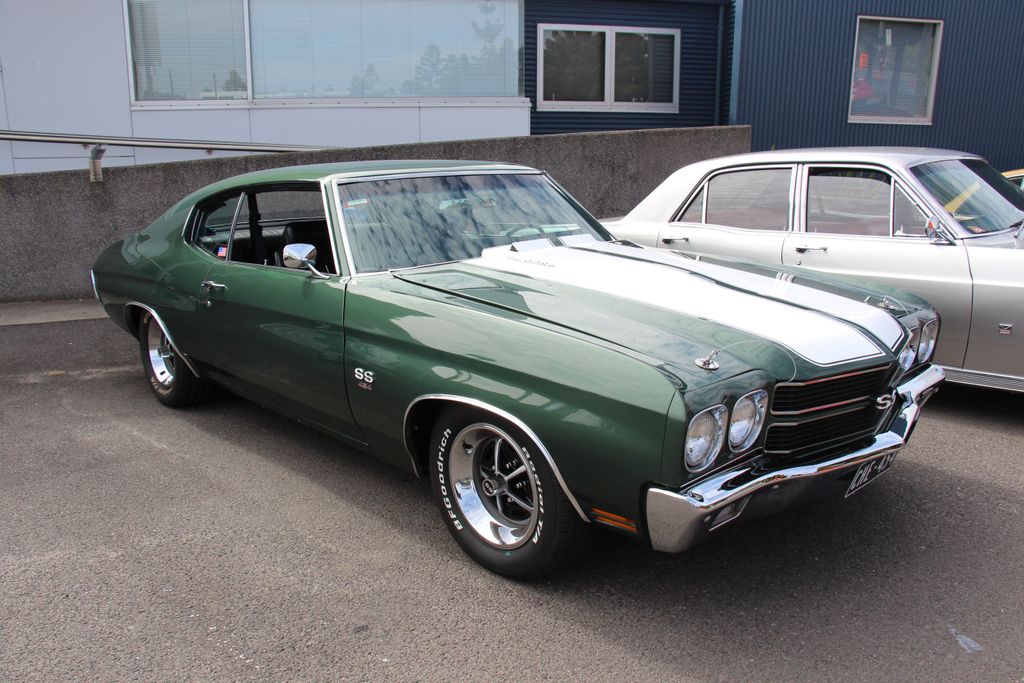
14. **1970 Chevrolet Chevelle SS454**While technically from the very beginning of the next decade, the 1970 Chevrolet Chevelle SS454 is universally regarded as the undisputed pinnacle of muscle-car development from the 1960s. It represented the ultimate expression of the era’s relentless horsepower war, bringing an unprecedented level of power and presence to the masses. This model offered two formidable big-block options: the LS5, producing a strong 360 horsepower, and the legendary LS6, which boasted a then-record 450 horsepower.
The LS6 variant, in particular, was an absolute beast, earning the distinction of being the most powerful production car of its time. Its incredible horsepower figure was a direct result of Chevrolet’s no-holds-barred approach, showcasing the peak of what Detroit could produce just before external pressures began to mount. The exclusivity of this ultimate performance was underscored by its limited production, with only 4,475 LS6 Chevelles ever leaving the factory, cementing its status as a highly coveted machine.
The SS454 masterfully combined high-end straight-line speed with the comfort and spaciousness of a midsize coupe, offering a potent blend of performance and everyday usability that was hard to beat. It stood at the zenith of the muscle-car horsepower war, a magnificent culmination of a decade-long pursuit of speed and power. Its aggressive stance, often accentuated by racing stripes, and its sheer presence made it an unforgettable sight on any road or track.
This car emerged just as the tides were beginning to turn, preceding the era when stringent emissions controls and skyrocketing insurance rates began to clamp down on the excesses of performance that had defined the 1960s. The Chevelle SS454, particularly in LS6 guise, serves as a thunderous testament to an era when raw power reigned supreme, leaving an indelible mark on automotive history and continuing to inspire awe to this day.
Car Model Information: 1969 Chevrolet Chevelle SS
Name: Chevrolet Chevelle
Caption: 1970 Chevrolet Chevelle SS 396 Sport Coupe
Manufacturer: Chevrolet
Production: 1963–1977
ModelYears: 1964–1977
Class: Mid-size
Platform: GM A platform (RWD)
Layout: FR layout
Successor: Chevrolet Malibu
Categories: 1970s cars, All articles needing additional references, All articles that may contain original research, All articles with specifically marked weasel-worded phrases, All articles with unsourced statements
Summary: The Chevrolet Chevelle is a mid-sized automobile that was produced by the Chevrolet division of General Motors (GM) in three generations for the 1964 to 1977 model years. Part of the GM A-body platform, the Chevelle was one of Chevrolet’s most successful nameplates. Body styles included coupes, sedans, convertibles, and station wagons. The “Super Sport” versions were produced through the 1973 model year and Lagunas from 1973 through to 1976.
After a four-year absence, the El Camino was reintroduced as part of the new Chevelle lineup in 1964.
From 1964 to 1969, GM of Canada sold a modified version of the Chevelle that included a Pontiac-style grille, and a LeMans instrument panel, marketed as the Beaumont.
The Malibu was the top-of-the-line model to 1972, and completely replaced the Chevelle nameplate starting with the redesigned, and downsized 1978 model year.
Get more information about: Chevrolet Chevelle
Buying a high-performing used car >>>
Brand: Chevrolet Model: Chevelle
Price: $119,550 Mileage: 93 mi.
Read more about: 14 Untamed 1970 Muscle Cars That Still Roar and Resonate Today: A MotorTrend Deep Dive
The 1960s were more than just a decade of cultural upheaval; they were a golden age for American automotive innovation, particularly in the realm of muscle cars. From the audacious engineering that squeezed race-bred power into street machines to the bold styling that turned heads and set trends, these vehicles were true rule-breakers and boundary-pushers. The models highlighted here, especially those that emerged in the late ’60s, didn’t just inherit the muscle car mantle; they refined it, pushed its limits, and solidified its place as a cornerstone of American car culture. Each car, with its unique quirks and undeniable performance, contributed to an enduring legacy that continues to captivate enthusiasts, collectors, and dreamers worldwide, proving that some legends truly never fade.

